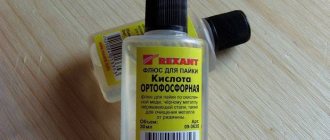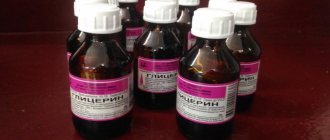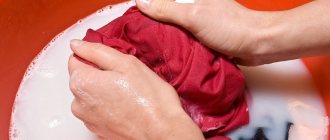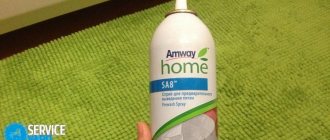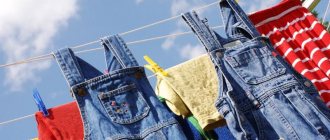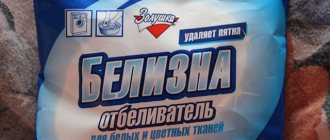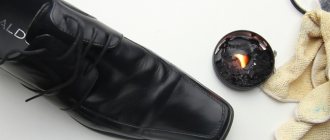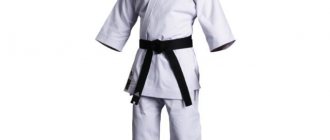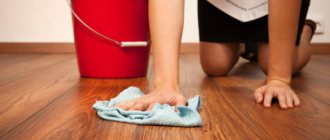Glycerol is one of the simplest types of trihydric alcohol. It is a colorless liquid with a viscous consistency and a slightly sweet taste. Many people stock up on it, adding one or more bottles to their home medicine cabinet, so it is often perceived as a medical drug. But experienced housewives know that it can be successfully used when doing housework: in this case, such a liquid often comes to the rescue. There are many little tricks you can find on the Internet and in home economics books that can make the cleaning process much easier. Today we will talk about how this liquid helps get rid of stains and how to remove glycerin if it accidentally gets on clothes during cleaning.
Glycerin for cleaning the house from dust
The product can be used not only for skin care, but also at home. This is an excellent solvent that can deal with a number of stains.
Glycerin for cleaning the house from dust:
- It is used for cleaning floors, because this is an ideal option for adding shine to parquet or laminate floors. Glycerin is also added to special floor cleaning products. This allows you to acquire surfaces with a beautiful polished look and shine.
- To do this, you need to dissolve 20 ml of glycerin in 3 liters of water. The water needs to be hot. Rinse the floor cleaning cloth in this solution and wipe the surface. Before doing this, it is advisable to clean with a vacuum cleaner or broom so that no dust or dirt remains on the surface.
- Glycerin will help deal with stains on wooden furniture. To do this, dissolve 5 ml in 200 ml of warm water. Pour the liquid into a spray bottle and spray onto the surface of the furniture. Using microfiber or soft flannel, thoroughly rub the surface until shiny.
Means
Removing water and chalk markers
Stains left by chalk and water-based felt-tip pens are among the simplest stains. If you immediately wash your clothes with laundry soap, bleach or powder as soon as you stain your clothes, the stain will disappear.
And if it has already dried out and ingrained itself into your clothes, then you can use the following remedies.
Glycerin for stains on clothes
Glycerin is often used to remove stains. This is a good organic solvent that works like gasoline.
Glycerin for stains on clothes:
- To prepare a stain remover, you need to mix 10 ml of glycerin, 10 ml of ammonia and 30 ml of water. The product must be poured onto the paint stain and left for 1 hour.
- After this, wash with laundry soap and hot water. You can load things into the washing machine and wash them at 40 degrees. Do not use the product on silk and wool fabrics.
- This is ideal for synthetics and cotton. The product should be used with caution on fabrics that contain elastane, as this can cause the elastic fibers to break.
- Glycerin can remove paint, wine, coffee and grass stains. However, it is worth remembering that this is a greasy substance that leaves greasy stains on the surface. But traces of glycerin are much easier to remove than traces of dyes. Therefore, glycerin can be used to remove stains from brilliant green, fucorcin, ballpoint pens, felt-tip pens, and oil paint.
- However, success is only possible if you begin to remove the stain immediately. Oil paint dries very quickly, especially if it is enamel. Then it is almost impossible to dissolve the dried pigment. In this case, it is necessary to scrape the surface with a sharp knife to remove the hard layer, only then apply glycerin. It is mixed with ammonia or acetone.
How to remove drink stains?
Tea and coffee are the two main sources of frequent stains on clothes. They are not so easy to eliminate with washing powder, no matter which company is chosen: Ariel, Persil, Tide, Frosch, Sarma, Ushasty Nyan.
It is worth taking note of the following recommendations:
- If you spilled coffee or tea on light-colored clothing, before using the component, it should be preheated. The best option is a water bath. Rub the heated mixture with a cotton swab or a small piece of clean cotton cloth. After a third of an hour, the clothes are rinsed and blotted with a towel or napkin.
- If items made from thin fabric are dirty, you can make an alternative based on water, glycerin, or a few ml of ammonia aqueous solution.
- You can increase the effectiveness by adding salt. A mixture is prepared, the consistency of which should resemble gruel. It is applied to the remaining dark streaks. After they disappear, wash the clothes using the usual method with powder.
- Option with a 10% ammonia solution, maintaining the proportion of 8 ml of glycerin per 2 ml of ammonia. The resulting composition is applied to the contaminated segment, after which the clothes are washed.
- Woolen items can be washed perfectly using the following method: add 20 ml of polyhydric alcohol and 10 ml of ammonia to 200 ml of water. After the blots have dissolved, you should rinse your clothes. To do this, it is recommended to use softened water.
The use of glycerin for leather clothing and furniture
Glycerin is often used not only to care for facial skin, but also to soften leather clothing.
Use of glycerin for leather clothing and furniture:
- It is necessary to warm the clean product to a temperature of 50 degrees, moisten a cotton pad with it, and wipe the leather products. Leave for 15 minutes. During this time, the product should be absorbed. If the surface of the clothing still remains dry, creases and folds are visible on it, and dryness is felt, the procedure can be carried out several times in a row until the surface is well moistened and soft.
- It is worth using glycerin to care for leather furniture. If paint has been removed from leather products using organic solvents, acetone or alcohol, and products that dry out the leather, it is recommended to use glycerin for final treatment. This will help soften the surface of the product, make it softer and prevent the appearance of cracks and creases.
Pharmaceutical drug
How to remove pen ink from clothes: my 17 proven recipes
Ink marks can be easily removed at home.
My daughter started first grade this year. And everything would be fine, but you have to gnaw on the granite of science with a pen in your hand, carefully writing letters and numbers. I often find characteristic blue spots on white blouses, and not only on them. I tried many methods and learned how to quickly get rid of ink. I decided to tell you how to remove pen marks from clothes.
Tips for removing ink from clothes
Incidents happen not only to children, but in 99% of cases, ink comes off easily from the fabric if you act correctly.
Before you start removing stains, I will give you a few tips that will help you remove ballpoint pen ink faster and more efficiently:
- If an ink stain appears on your eyes, blot it with a towel or paper;
- Do not wash out the ink, as it will penetrate even more into the fibers of the fabric and will be more difficult to remove;
Do not wash or rub the stain, it will spread
- Study the label on the clothing, it indicates at what temperature the item can be washed;
- Select cleaning products individually - it depends on the type of fabric and its composition;
- Check the product on the wrong side so as not to spoil the item;
- Using wax, outline the boundaries of the stain, and it will not spread further;
- When removing, move from the edge of the blot to the center, so the mark will not increase in size;
- Place a cotton pad or clean cloth under the blot so that the ink is absorbed into the underlying material.
Instead of a napkin, cloth or cotton pad, you can use starch. Simply sprinkle it onto the area contaminated by the ampoule and it will absorb the ink.
Blot the stain with a napkin so that the ink is absorbed into it as much as possible.
Removing ink at home
Of course, among all the methods, the most effective is dry cleaning. Chemicals will quickly deal with the blot without harming the clothing material.
On the one hand, the issue is easily resolved, on the other hand, you will need to pay a lot of money. The price of dry cleaning is much higher than the cost of products for a similar procedure at home.
Useful products to help get rid of ink stains
You can remove stains from fabric with your own hands and quite successfully. I suggest you try the recipes I have tested.
Recipe 1. Glycerin
To remove ink from clothes, you need to pour glycerin over them and leave for one hour. Then wash the clothes in warm salted water. To improve the result, you can additionally wash the item in the usual way.
To remove ink, soak clothes in glycerin for one hour
Recipe 2. Ammonia + soda
You will need:
- 1 teaspoon of soda;
- 1 teaspoon of ammonia;
- 1 glass of water.
Mix all ingredients in water. Apply the resulting mixture to the blot and leave for 45-50 minutes. Next, wash the affected clothing in soapy water and rinse.
Ammonia and soda will quickly remove stains from clothes left by a pen.
Recipe 3. Ammonia and hydrogen peroxide
How to wash a pen from white clothes if the stain is large? A mixture of alcohol and peroxide will help get rid of dirt in a couple of minutes.
For this:
- Mix one teaspoon of ammonia and hydrogen peroxide in 250 grams of water.
- Soak a cotton pad in the solution and wipe the ink stain from a ballpoint pen.
- Then we wash the item.
The stain will be removed instantly if you mix ammonia and hydrogen peroxide and apply it to the stained area.
Recipe 4. Dishwashing liquid
The detergent not only removes grease from dishes, but also helps get rid of traces of the ampoule on any fabric.
You just need to apply the cleaning liquid to the stained area and leave for 15 minutes. After the time has passed, wash the item.
Dish detergent will remove stains in 15 minutes
Recipe 5. Alcohol with laundry soap
These tools work in turn:
- We wipe the ink from the ballpoint pen with alcohol.
- Then apply laundry soap to the contaminated area for a few minutes.
- We wash the item in warm water.
- After this, rinse in cold water.
Ink stains can be removed using alcohol and laundry soap
Recipe 6. Vinegar
Vinegar can be found in every home. Heat it to 50 °C and treat the contaminated area. All that remains is to wash the wardrobe item in a machine or by hand.
This recipe is perfect if you need to remove a gel pen, and will also work with a regular ampoule.
Heated vinegar removes marks from ballpoint and gel pens
Recipe 7. Vinegar and ethyl alcohol
Take vinegar and ethyl alcohol in equal proportions. Mix and apply to ballpoint pen ink. After this, the clothes must be thoroughly rinsed under running water.
These ingredients will help get rid of even old ink stains.
A mixture of ethyl alcohol and vinegar will quickly remove old ink stains
Recipe 8. Milk
Milk or curdled milk also works well in removing fresh and old ampoule stains.
- To remove recent stains, wash the item in warm milk.
- If the ink mark was created a long time ago, soak the affected outfit in milk for several hours.
While the fabric is soaked in the fermented milk product, do the following:
- prepare a soap solution;
- add ammonia there.
We take out the soaked item, wring it out lightly and wash it in the prepared soap solution.
To remove the ampoule, soak the stain in milk or curdled milk for several hours
Recipe 9. Lemon juice and salt
If the stain was recently applied, sprinkle it with salt and moisten it with lemon juice. Wait a little, you will see how the stain dissolves before your eyes. Then wash the item.
Salt should not be used on white things; it can leave a yellowish mark, which will also need to be removed later.
Fresh stains are removed with salt; it perfectly absorbs pigment. If pen marks appear on white fabric, moisten the stain only with lemon juice.
Recipe 10. Kerosene
Kerosene can be used on woolen products. Apply it to a cotton pad or napkin and treat the stained area. Then wash as usual.
Kerosene removes ink stains from wool items
Recipe 11. Ink removal pen
A stain from a shirt, blouse or any other item of clothing can be easily removed using a special pencil or marker, which can be purchased at a hardware store. I didn’t really believe this remedy, but decided to try it. And, yes, the stain went away as quickly as if it had never existed.
In the photo - a special marker for removing ink stains
The pencil absorbs dirt. You need to run it over the blot several times and then wash the item.
Ink traces can be removed using a special marker that absorbs ink before your eyes
Recipe 12. Stain removers
Household chemicals offers a wide selection of cleaning products:
- soap;
- powders:
- gels;
- liquid substances;
- pasty products.
The instructions indicated on the packaging of any product you choose will tell you how to use it. The main thing is to consider the type of fabric.
Stain removers are as effective at removing ink as dry cleaning
Method 13. Hairspray
Hairspray is based on alcohol. And, as we already know, alcohol perfectly removes paste from the pen.
Spray with varnish until the fabric becomes damp. The ink mark will begin to disappear before your eyes. For complete cleaning, wash your clothes in the washing machine.
Moisten the stain with hairspray and it will disappear before your eyes
Recipe 14. Toothpaste
Regular pen ink can be removed by rubbing a small amount of toothpaste into the stain. Then the wardrobe item needs to be washed.
Toothpaste also works well on ink stains
Recipe 15. Nail polish remover
How to wash a pen from clothes if you don’t have a suitable product at hand? Acetone is a product that dissolves ink:
- blot the stain with a clean napkin;
- place the cloth under the stained area;
- Apply acetone to the stain;
- Use a cotton pad to wash off the dirt;
- wash clothes in cool soapy water.
Instead of pure acetone, you can use nail polish remover - it dissolves the ink.
I do not recommend using nail polish remover for thin, delicate fabrics. This aggressive agent can corrode not only the stain, but also the material. Then in front of you there will no longer be a spot, but a hole.
Recipe 16. Soap solution
To remove a stain from a genuine leather jacket, you will need:
- 100 ml warm water;
- dishwashing liquid;
- 1 tablespoon of soda.
Mix everything and apply to the stained area. We wait 15-20 minutes, then wipe the contaminated area with a damp cloth, then with a dry one.
Dishwashing liquid, soda, water - to remove ink from leather products
Recipe 17. Shaving foam
Foamed shaving foam is great for removing ballpoint pens from clothes. Apply the product to the ink mark, and then erase the entire item.
Regular shaving foam can be used to remove pen stains.
Conclusion
Now you know that removing ink from a ballpoint pen is easy and simple. I have given only those recipes that I have tested myself - they really work!
If you want visual instructions, watch the video in this article. I'm wondering, do you have your own secret recipe for removing ink from clothes? Share in the comments.
stozabot.com
Glycerin for glass fogging
Glycerin can be safely used to clean glass. To do this, mix 30 ml of glycerin, 15 ml of ammonia and 70 ml of water. Pour this product into a spray bottle and apply it to the surface of glass and tiles in the bathroom. Wipe with a dry cloth. This product will help get rid of serious dirt and give the surface a shine.
Glycerin for glass fogging:
- The product can be safely used to prevent the appearance of a frosty pattern on glass.
- It is necessary to mix glycerin with alcohol in a ratio of one to ten. Moisten a cotton pad with the resulting mash and apply it to the surface of the glass.
- After this, carefully wipe the smooth surface using microfiber until the glass shines.
- The product prevents dust from settling on the surface and protects the window from the formation of an ice crust.
We remove old fat stains from a Bolognese jacket
You can wear your bologna jacket again when you remove an old grease stain with these effective remedies.
Method number 1. Potato pulp or starch . Grate half a small potato on the finest grater and place the resulting mass on the stain. Wait a couple of hours. Has the stain gone? Then wash the jacket as you usually do. If not, then soak a cotton swab in gasoline and apply to the stain for 5-10 minutes.
Method number 2. Soap + turpentine + ammonia. You will need: half a regular soap, 2 teaspoons. turpentine and 1 teaspoon. ammonia. Mix everything and distribute over the dirt. Wait until the mixture is absorbed and the result appears, and wash the jacket.
Important ! Use these methods with extreme caution on colored items!
Method No. 3. Dish washing liquid .
If the jacket is colored, then use only a transparent product! Gently spread the liquid over the stain from the inside out and wait a couple of minutes.
Has the stain come out? Then wash your jacket. And if not, repeat this procedure.
How to use glycerin for laundry?
The product is used not only for removing stains and cleaning floors, but also for imparting softness to knitwear and terry cloth items. Laundry does not need to be placed in the dryer after washing.
How to use glycerin for laundry:
- Run an additional rinse and pour a solution containing 15 ml of glycerin into the detergent or conditioner compartment. You can rinse in a basin. To do this, dissolve 15 ml of glycerin in 3 liters of warm water and rinse the laundry.
- After this manipulation, it is necessary to place the laundry in a solution prepared from 5 liters of warm water and 15 drops of ammonia. Don't worry, the smell doesn't last after rinsing in ammonia. Ammonia will add softness. There will be no greasy stains from glycerin if you use hot water to dissolve.
- To remove old tea, coffee and chocolate stains, you need to mix the fatty product with fine table salt to obtain a mushy paste. Apply it to a dry spot and leave for an hour and a half. During this time, the stain should noticeably lighten. After this, the clothes are rinsed in a soapy solution and can be washed in a washing machine. Before washing, it is advisable to shake the clothes so that the salt and glycerin fall off from the clothes.
Solvent
Removing complex stains
The most common complex blots include stains from propolis, chocolate, blood, red wine, ink, and rust. Each of them has characteristics due to the chemical composition of the pollutant.
It is not recommended to soak T-shirts stained with chocolate in water, wash them with bleach, which contains chlorine, or rub them with sponges or napkins. First aid for clothes is provided as follows: prepare the liquid: add ½ bottle of ammonia to a glass of water.
It is best to rub light-colored items with preheated glycerin. Its temperature should be 60°C. Once the stain is well saturated and begins to disappear, you can start rinsing.
To remove rust you need:
- Liquid soap is added to glycerin. The funds are selected in equal proportions. The segment is treated with the composition, after which it waits for a day. Next is washing.
- You can add chalk and water to glycerin. All components are taken in equal quantities. After treatment, the wardrobe items are left for a couple of hours, after which they are washed as usual.
It is recommended to output ink as follows:
- Contaminated areas are treated. They wait at least an hour. After the time has passed, the laundry must be rinsed in warm water with salt. Even if there are any traces left, they will easily disappear after regular washing using washing powder.
- You can increase efficiency with ammonia. Mix water, glycerin, and ammonia in equal quantities. The resulting solution is used to treat the stain. After a few hours, the clothes need to be washed.
Glycerin - household use for cars
Car enthusiasts have long appreciated the product and use it with pleasure to care for their cars.
Glycerin - household use for cars:
- Anti-freeze wipers. In order for the wipers to work properly, it is necessary to saturate their surface with glycerin. To do this, soak a cotton swab in liquid and wipe the surface of the wiper. In spring, the liquid must be washed off with warm water. The effectiveness of using the product is due to its low freezing point, so even in severe frosts the wipers do not freeze.
- For the care of the dashboard and body. It is necessary to fill the sprayer with 30 ml of water and 10 ml of glycerin. Shake until smooth and spray onto dashboard. Wipe with microfiber until shiny. The product removes even old stains and masks barely noticeable scratches and abrasions.
- You can use the product as a tire “blackener”. Dissolve 40 ml of the product in 100 ml of water and spray on the rubber, rub until shiny.
- The product is often used to care for the body. After the next wash, in order to hide minor scratches and add more shine, you need to mix 10 ml of organic solvent with 70 ml of water until a homogeneous mass is obtained. Spray it onto the paint surface and buff thoroughly with a microfiber cloth. Carry out procedures no more than once a month. You should not increase the concentration of glycerin, otherwise you risk getting a lot of greasy stains inside the car and on the surface of the body.
- To prevent the windows in your car from freezing, you need to mix 20 ml of glycerin and 60 ml of water, a few drops of ammonia. Spray the product onto the glass and wipe until shiny. You can use a recipe in which glycerin is mixed with ordinary ethyl alcohol in a ratio of one to ten. This product must also be used to rub the glass inside and out.
Glycerin can be successfully used to make perfume. To prepare the product, you need to pour a few milliliters of glycerin into a small bottle. In order for the product to pour better, in order to reduce the viscosity, it is advisable to warm it up in a container with hot water. After this, add a few drops of your favorite essential oil to the glycerin. Citrus fruits and pine needles work best. Close the container with a lid and make several holes in it so that you can feel the aroma of citrus in the car interior.
Secrets of home dry cleaning
When using household chemicals and cleaning things from dirt, you need to remember little tricks. The main ones:
- the fresher the dirt on the clothes, the easier it will be to remove it;
- When using bleach, you should first apply it to the inner lining of your clothing to check whether it will damage the fabric;
- Before you begin removing a stain, you should clean the area around it with a brush;
- all stains are cleaned, starting from the edges and gradually moving towards the middle.
Does glycerin stain clothes?
Glycerin is a product that dissolves well in water, so most often after removing paint stains, the mass can be easily washed off with warm water.
Does glycerin leave stains on clothes, how to remove them:
- If greasy stains are not in a hurry to go away, you can pour hot water over the fabric, raising the temperature to boiling water.
- If the canvas is natural, use lemon juice. Wipe off glycerin stains with citrus juice and machine wash.
- Glycerin is easily removed with regular alcohol or vodka. Just moisten the sponge with vodka and wipe away the dirt.
A big problem is rust stains on clothes. They are very difficult to remove. In order not to throw things away, you can breathe a second life into them. The main problem is that corrosion occurs when metal and water are in contact for a long period of time. Therefore, do not soak items with metal snaps or buttons for a long time. To remove rust stains, you need to mix ammonia with glycerin 1:1 and leave for an hour and a half. After this, rinse the fabric thoroughly in hot water.
Removing stains
What stains can be removed?
Glycerin is a colorless liquid, highly soluble in water, and is hygroscopic and viscous. When used correctly, they remove dirt of various origins. At the same time, it will get rid of both pollution that has arisen recently and old ones.
Even if the effect is insufficient, you can enhance the effect with ammonia and hydrogen peroxide. Tandem is capable of making things clean and will save housewives from stains of various origins:
- berry juices,
- gouache,
- drinks: tea, cocoa, coffee,
- tomatoes,
- ink from cotton fabric, leather,
- stamp paint,
- felt-tip pen,
- yellow stains,
- pencils.
Using it for cleaning is simple: just apply the component to the dirty surface and leave for a while. If a delicate fabric (for example, silk) is being cleaned, then you need to use cotton for lining under it, a cotton swab, which is used to apply glycerin to the fabric.
Glycerin for preserving flowers
Glycerin is an excellent product that is used in the food industry to give the necessary consistency to confectionery and flour products. On the packaging you can find the inscription - E422 stabilizer. In addition, it acts as a preservative, extending the shelf life of products. It is often added to alcoholic beverages.
Glycerin for preserving flowers:
- The product is used not only for washing glass and removing stains from the surface of the body, but also for preserving bouquets. To extend the life of flowers, you need to add a few drops of glycerin to a vase of water. In this case, there is no need to add sugar.
- This is ideal for roses and lilies. Glycerin has been successfully used to preserve the plant. It is necessary to mix the product with water in a 1:1 ratio and pour it into a jar.
- Place the flower you want to preserve in the solution. Be sure to remove the lower leaves. It is necessary to make a cut on the stem and split it so that the solution penetrates better inside. This way the flowers last for several weeks.
Important information about alcohol stains
The Spruce / Letícia Almeida
- Liquor or beer stains are a type of stain that is based on the bioactive compound tannin.
- For this type of stain, the most suitable detergent is oxygen-based laundry detergent and oxygen-based bleach.
- Alcohol stains should only be washed with cold water.
see also
Dry cleaning at home: how to remove nail polish from different surfaces
Glycerin in agriculture
This product is also used in gardening. Plants independently synthesize this substance during photosynthesis. For feeding, you need to dissolve 1 ml of glycerin in 100 ml of water. It is necessary to obtain a 1% solution.
Glycerin in agriculture:
- Feeding leaves and stems. The leaves absorb the product very well, breaking it down to produce additional energy, which replenishes nutritional deficiencies.
- This is ideal for summer with low air temperatures. Fertilizing after drought is also successfully used. This remedy fights infections. After using fungicides, you need to water the soil with glycerin.
- The drug has proven itself well after using nitrogenous compounds. It stimulates the growth of beneficial microorganisms in soil and plants.
- To make compost faster, water the plant mass with a glycerin solution. It is believed that it stimulates the growth of beneficial microorganisms that initiate the process of decay.
Solution
Useful tips
Household cleaning components can not only remove various contaminants. The process may end with the appearance of traces. To prevent this from happening, it is recommended to test the reaction on an inconspicuous area of the laundry.
Almost all stains can be removed if you know about effective washing methods. Glycerin is an indispensable product in everyday life. Every housewife should definitely take note and write down algorithms for removing stains of various origins: fruits and berries (plums, cherries, cherries, currants), rust, ink, felt-tip pens, tea, coffee. Indeed, in most cases, you need to act immediately, or a reminder in the form of a blot will remain on your favorite T-shirt forever.
In addition to removing stains, it is useful for washing surfaces, wiping mirrors, lacquered furniture, and polishing parquet. An alternative to cleaning products that is effective, affordable, and easy to use.
No one is immune from contamination of their favorite things. And often, such a nuisance occurs suddenly and requires quick action to clean the dirty item. How experienced housewives deal with stains - we will learn the secrets and methods for removing stains from clothes.
Other secrets
We looked at the features of using glycerin and found out what it is needed for. However, there are a few more tricks that many housewives are happy to use in everyday life.
- If you drop 1-2 drops of glycerin into the water in which the flower bouquet will be placed, then the beautiful flowers will last much longer.
- If you need to wash leather gloves, this polyhydric alcohol will also come to the rescue and help avoid deformation of the material. For this effect, add 5-6 drops of the substance to the water during the last rinse.
- Owners of glasses know that in winter, when entering a warm room from the cold, you can temporarily lose the ability to see due to the fact that the glasses are hopelessly fogged up. Glycerin alcohol will help solve this problem. To do this, you need to mix it with liquid soap (proportion 3:7) and add 2 drops of turpentine. The resulting product should be used to treat the lenses, then wipe them with a flannel cloth.
Glycerin is also useful for making wool products soft and fluffy after washing. You should use 1 tsp. substances per 2 liters of warm water during the penultimate rinse. Next, ammonia is dissolved in cold water in the same proportion, things are rinsed one last time and sent out to dry in the fresh air. They will become soft and surprisingly pleasant to the touch.
We have listed the main ways to use glycerin in everyday life. It has also found very wide application in industry, agriculture, pharmacology, even in the manufacture of tobacco products and weapons.
Removing stains from colored fabrics
Rust stains spoil any color of material. Regular powder for multi-colored clothes will not cope with such stains. Red stains on colored fabrics can also be cleaned with products available in regular stores.
Chalk and glycerin paste
The two components are mixed in identical proportions and diluted with water. You should get a paste-like consistency. The mixture is distributed, left, and after a day the material is washed. There is another cleaning method. Before removing rust from clothes with a mixture of glycerin and chalk, they are washed with conditioner.
Next they do this:
- prepare a mixture of glycerin (0.5 l), chalk (50 g) and water (0.3 l);
- the composition is applied to a wet item;
- clothes are placed in a bag and left for 10 hours.
Then they take it out, dry it, and then wash it.
Glycerin and dish detergent
How to remove rust from clothes? This method is recommended for cleaning delicate materials. Both means are combined in identical parts. Contamination on colored material is treated with the mixture and set aside for 8 hours. When time has passed, it can be rinsed and washed.
Dishwasher detergent
Such compositions remove both fresh and old rust on things. To make them clean, prepare a solution of 1 liter of product, glycerin (120 ml) and water at room temperature (5 liters). Before machine washing, the soiled material is soaked for 6 hours. At the same time, the basin is covered with polyethylene film.
Onion
Rust can be removed from clothes at home using onions.
To get rid of a stain, you need:
- peel the skins off the onion;
- chop the onion in a blender;
- mix with 0.5 l of glycerin;
- spread the mixture over the surface of the fabric and set aside for 3 hours;
- remove the composition and wipe the area with lemon;
- Rinse the material under running water and put it in the washing machine.
Onions with glycerin remove traces of dirt even on delicate fabrics.
Table salt, vinegar and soda
How to remove rust? Stains can be easily removed using folk remedies. This is done with vinegar, soda and salt. To prepare the solution, take a small cup and pour in a teaspoon of vinegar. Then add salt and soda and stir constantly until you get a thick mixture that resembles a paste. The item is carefully laid out and a paste-like mass is applied, left for 30 minutes, and then removed.
In cosmetology
This unusual alcohol has also found application in cosmetology, helping women preserve and enhance their beauty. There are several ways to use it.
- Add 2-3 drops of the substance to the bath for your hands or feet. It will help soften the rough epidermis and return the skin to its infantile freshness.
- Glycerin hair masks will allow you to achieve the effect of home lamination.
- By adding a couple of drops of glycerin to shampoo, you can significantly improve its quality. A foot cream enriched with the substance will quickly heal cracks and chafing on the heels.
Let's get acquainted with recipes for effective glycerin-based hair masks. You can use any of them 2 times a month.
First option
Required components:
- raw egg (needs to be beaten);
- 1 tbsp. l. glycerin;
- 2 tbsp. l. burdock oil;
- 1 tsp. apple cider vinegar.
Glycerin and burdock oil are preheated in different containers, then all components are mixed and applied to the hair for 30 minutes. After application, wrap your head with cling film and a towel. After half an hour, rinse your hair.
Second option
Components:
- 1 tsp. glycerin;
- 4 tbsp. l. honey;
- 2 tbsp. l. aloe juice
The first two components should be heated in different containers, after which all components should be mixed. Apply the mask to your hair, leave for 40 minutes, and remove completely.
Help with cleaning
The use of glycerin in everyday life does not end there. This wonderful invention of chemical science will help create ideal cleanliness in your apartment.
- With its help, you can rub mirror and glass surfaces, which will acquire crystal transparency.
- After treating lacquered furniture or polished tables with a small amount of glycerin, less dust will settle on them.
- You can use this miracle substance when washing floors: just add a couple of spoons of glycerin to a bucket of water - then your parquet, laminate or linoleum will shine like new!
We recommend: How to get rid of mold on walls using copper sulfate
But that's not all. You can update old leather products: bags, gloves, even pieces of furniture. It is enough to wipe their surface with glycerin, carefully treat the areas of joints and abrasions.
